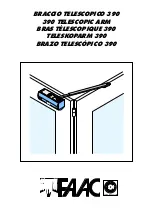
7
pressed!)
you can ignite the arc by touching the workpiece and slightly
lifting an electrode
(the arc ignition occurs at the moment of lifting an
electrode).
NON-CONTACT IGNITION - LAMP (9) IS ON
The welding process is initiated by pressing a control button on the grip.
When the button is pressed the gas valve is opened. Releasing the button
starts the ionizer - spark-over between an electrode and a workpiece
should initiate ignition of the arc. If ignition of the arc does not occur within
2.5s ionizer is turned off and ignition process must be repeated.
The arc ignites
with the current Ip. Pressing again (and releasing) the
control button starts the process of increasing the welding current from the
Ip value to the set welding current Is (during the time Tn). Pressing once
again (and releasing) the control button starts the process of decreasing
the welding current from the Is value to the Ik value (during the set time
To). The last fourth pressing (and releasing) the control button causes the
arc extinguish. If the control button is pressed briefly during the current fall
phase, welding current again will increase to the Is value. Shielding Gas
flows still during the set time Tg, then the gas valve is being closed. The
welding process has been completed.
4)
REMOTE CONTROL WHILE TIG 2T AND 4T WELDING
If the TIG welding torch is equipped with 2 buttons, it is possible to change
the welding current during performing the weld. One of the buttons is for
increasing and the second for decreasing of current setting (you can
freely assign buttons). Holding down one of these buttons changes the
welding current during welding. Changes of welding current are reflected
on the welder display (1). The welding current could be changed by 1A
within the range from 5 to 50A, and within the range 50-150A by 5A. The
change of welding current made during welding is stored and the next
cycle of welding will be done using the new settings.
5)
TIG PUNKT welding with direct current (DC-) -
the red light should
indicate





































